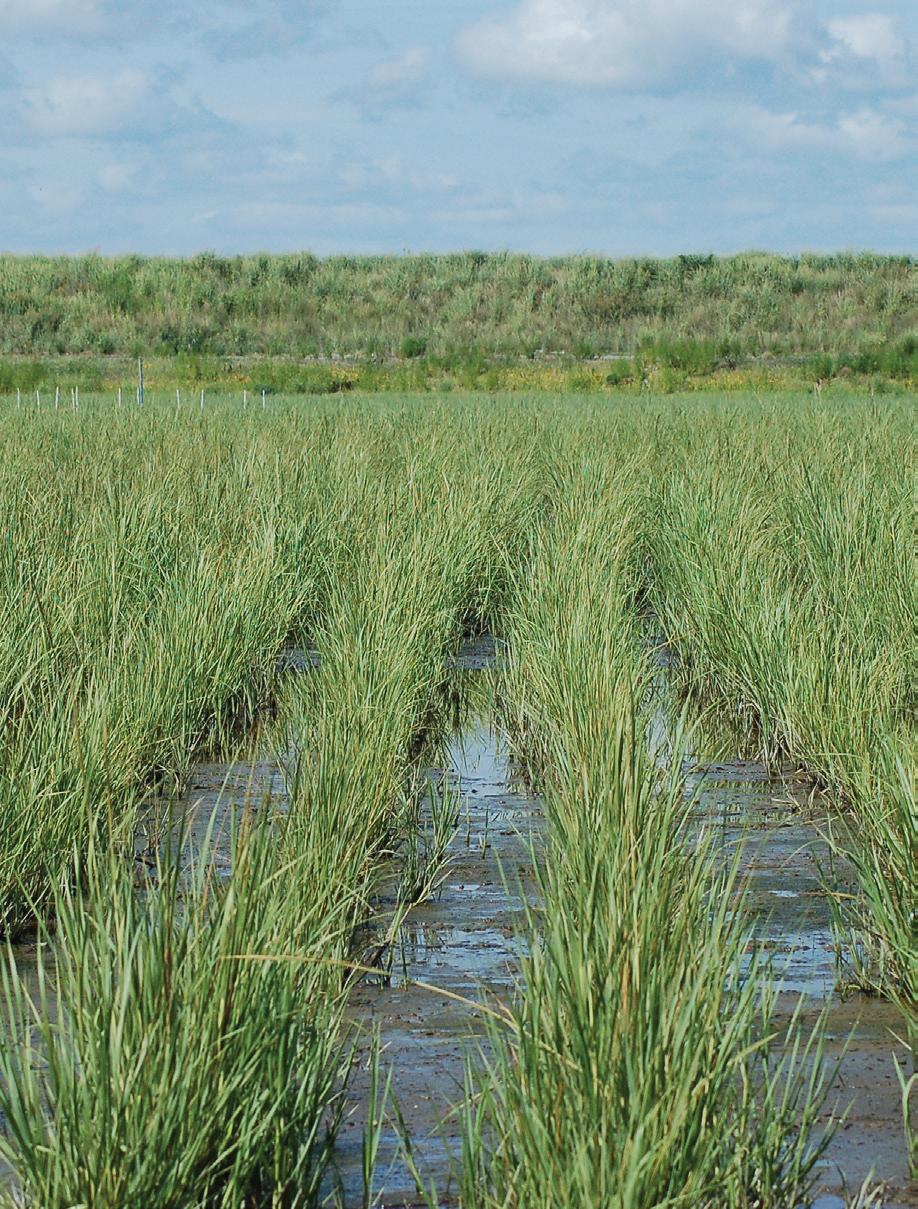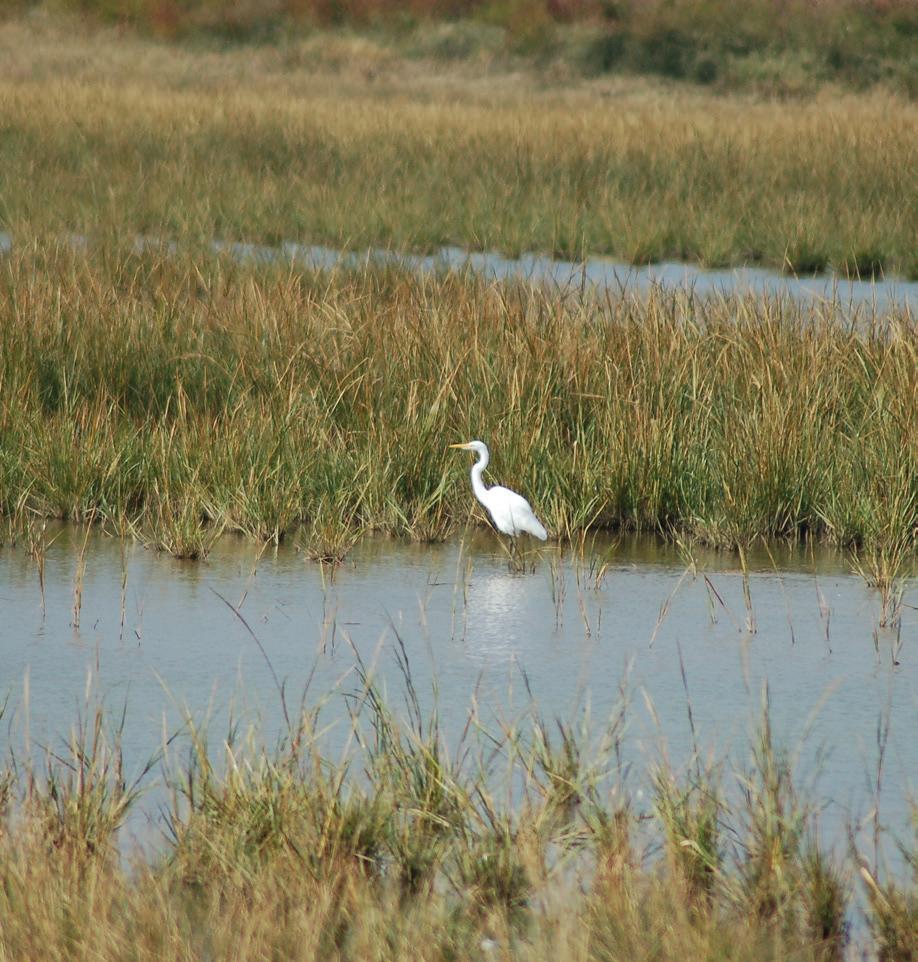
4 minute read
Rebuilding an Island
The restoration of Poplar Island
Poplar Island was once an 1100 acre island in the Chesapeake Bay. In 1900, the island was home to about 100 residents. As Poplar Island eroded and its residents began to leave, it transitioned to a sportsmen’s haven. Because of its close proximity to Washington D.C., the island attracted many prominent politicians, such as Franklin Delano Roosevelt and Harry S. Truman, to its shores in search of fish and game. By the early 1990s, so much of Poplar Island had eroded that only 5 acres remained.
Advertisement
That’s where a joint force of The Army Corp of Engineers, Maryland Department of Transportation and Maryland Port Administration stepped in. Analysis had shown that the loss of habitat all along the Chesapeake Bay resulted in the decline of many environmental values. A plan was put in place to restore many islands, including Poplar Island, using dredge materials from channels that led to the Port

of Baltimore. Construction of the island started in 1998, and soon the dredge-filled cells were ready to be planted.
Ecological Restoration & Management (ER&M) of Cockeysville, Maryland was selected to replant 97 acres of tidal wetlands on the island. These wetlands called for over 500,000 2” herbaceous plugs and nearly 7,000 containerized shrubs. ER&M had a long history of completing similar salt marsh restoration projects throughout the Mid-Atlantic. Their stellar reputation, along with their proximity to Poplar Island, made them a prime candidate to successfully complete the restoration. Since the goal of the wetlands was to create habitat for fish, birds, and other wildlife, selecting the right plants for the conditions was crucial. One unique attribute of the bay’s tides is that they would flood much of the job site twice each day. The plant palate was limited since only certain plants are tolerant of salt. For the tidal areas, Spartina alterniflora (Smooth Cordgrass) was the logical choice. Spartina alterniflora thrives in areas along the East Coast between the average low tide and average high tide water line. In areas of the marsh where flooding was more occasional, Spartina patens (Salt Meadow Cordgrass) was a more appropriate choice because of its high salt tolerance and ability to
habitat for wildlife, much of that wildlife being birds. The birds, however, did not want to wait until the restoration was complete before moving into their new home. During the spring planting, crews were slowed as to not disturb nesting sites. Some birds liked to make nests out of the plugs. The solution: surround the site with 5 miles of Goosefence. The Goosefence would keep the geese from entering work sites from the sides. String was pulled tight and woven between wooden stakes to keep birds from flying in from above. It was important to protect the plants until they were established enough to withstand the pressure of the thieving shorebirds.
Pinelands Nursery was excited to be able to supply much of the plant material for Poplar Island. We have worked closely with ER&M for decades and were honored that they chose us to be a part of such a large, high profile project. Griff Evans, President of ER&M, had this to say about our partnership: “Pinelands Nursery was instrumental to the success of this project. Based on their track record and well-run facilities, we were handle drought. Further up the marsh, lower salinity and less frequent tidal flooding allowed for a larger array of plants to be used.
O f c o u r s e , t h i s restoration project came with it’s own set of challenges. Poplar Island was just that - an island in the middle of the Chesapeake Bay. There were no roads to Poplar Island. All workers, equipment and supplies had to be brought over by barge or boat. Crews would often arrive at the dock before 6am for the 30 minute ride across the bay. Work days were dictated by the tides. This meant staying for 12+ hours to get planting completed.
Birds were yet another challenge ER&M had to face. The island was being recreated in part to provide “Based on their track record and well run facilities we were confident in their abilities to provide large quantities of well rooted, healthy plants within a narrow window of time.”


confident in their abilities to provide large quantities of well rooted, healthy plants within a narrow window of time. In addition, their ability and willingness to work with us to make last minute species adjustments, reliable communication, honest and accurate updates, and overall professionalism were invaluable.”


For more information about Poplar Island please visit: www.poplarislandrestoration.com




